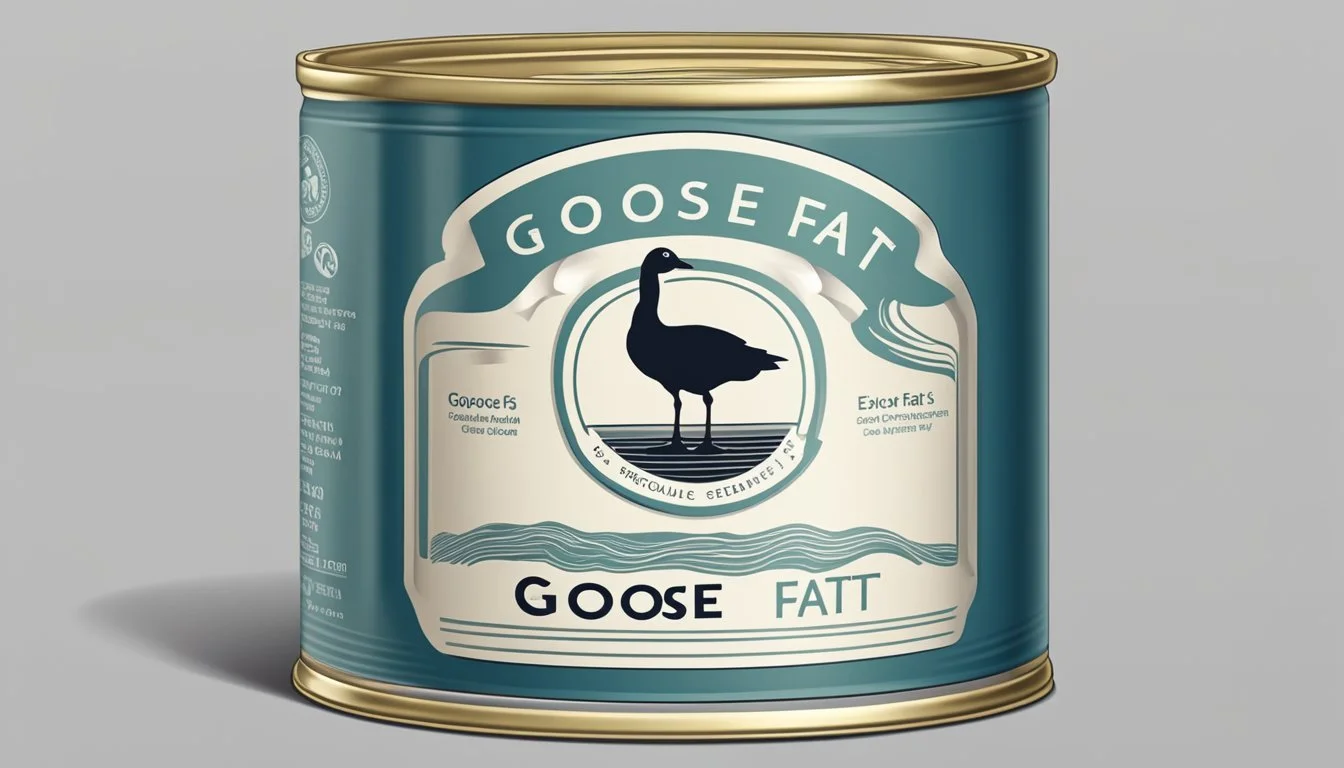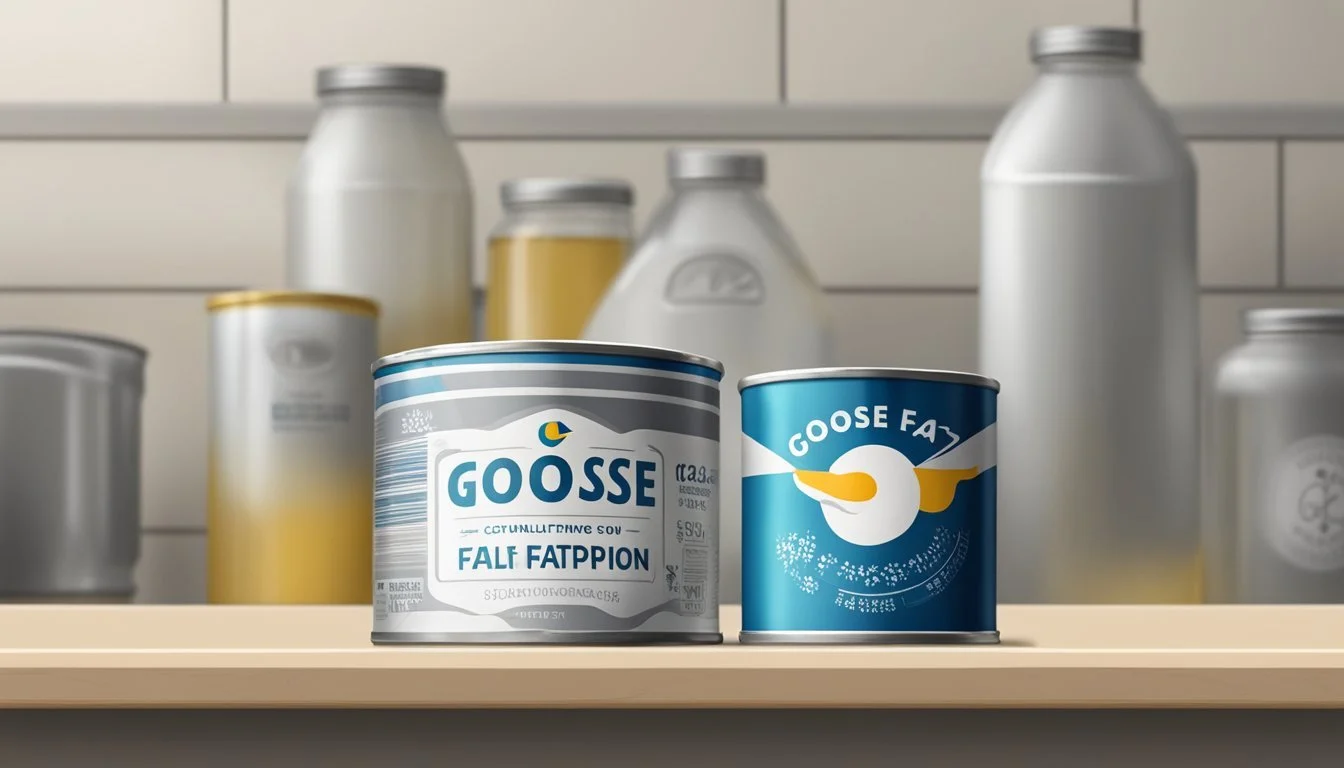How Long Does Canned Goose Fat Last?
Shelf Life and Storage Tips
Canned goose fat is a staple in many culinary traditions, valued for its rich flavor and versatility in cooking. As a preserved product, its shelf life is an essential consideration for both home cooks and professional chefs. Understanding how long goose fat retains its quality once canned can help ensure that dishes maintain the desired taste and texture.
The shelf life of canned goose fat is influenced by several factors, including storage conditions and the presence of contaminants. When properly stored in a cool, dry place away from light, a sealed can of goose fat can remain at peak quality for an extended period. Once opened, however, it is important to transfer any unused portion to an airtight container and refrigerate to prolong its freshness.
Quality is a central concern when it comes to using goose fat in the kitchen, as the purity of the fat can affect both the flavor and healthfulness of the outcome. Over time, opened canned goose fat may experience a decline in quality, even when refrigerated, making it imperative to use it within a reasonable timeframe to ensure the best results in cooking.
Understanding Goose Fat
Goose fat is a culinary ingredient known for its rich flavor and versatility in cooking. This section delves into its nutritional composition, culinary uses, and aspects crucial for its preservation and safety.
Composition of Goose Fat
Goose fat is high in monounsaturated fats, primarily oleic acid, which is also found in olive oil. It contains a moderate amount of saturated fats and a lower proportion of polyunsaturated fats. Goose fat offers a unique nutritional profile compared to other animal fats.
Culinary Uses of Goose Fat
Highly regarded for its flavorful contribution, goose fat is used for sautéing vegetables, frying foods, and roasting potatoes, imparting a distinct taste. It's also beneficial in stews, pasta dishes, and as a spread due to its smooth texture.
Health Aspects of Goose Fat
In moderation, goose fat can offer health benefits, like other sources of monounsaturated fats, by supporting healthy cholesterol levels. However, it is energy-dense and should be used judiciously within a balanced diet.
Comparison with Other Fats
When compared to fats like butter and lard, goose fat has a higher smoke point, making it suitable for high-temperature cooking. It's often favored over duck, chicken, and beef fats for its rich yet delicate taste.
Shelf Life Indicators
Fresh goose fat should have a clean smell and a creamy to white coloration. Any off-putting odor, discoloration, or presence of mold suggests spoilage. Checking the freshness can indicate how long the goose fat may be stored.
The Importance of Temperature
Temperature significantly affects goose fat's shelf life; cooler temperatures in the fridge or freezer can prolong its usability, while exposure to heat can accelerate deterioration.
Storage Solutions
For optimal storage, goose fat should be kept in an airtight container to reduce oxidation. Proper containers can include glass jars, BPA-free plastic containers, or even ice cube trays for portioning.
Longevity and Preservation Methods
Rendering the fat properly by removing impurities extends shelf life. Storage in a refrigerator typically allows for a shelf life of 2-3 months, while freezing can extend it to up to 12 months.
Signs of Spoiled Goose Fat
The appearance of mold, a rancid or soapy smell, and discoloration are clear signs of spoiled goose fat. If these signs are present, the fat should not be consumed.
Safety Considerations
To avoid any food safety issues, one must adhere to proper storage methods, respect the product's expiration date, and ensure the fat remains free from contamination during storage.
Practical Tips
To maximize the shelf life and quality of canned goose fat, it is crucial to follow specific storage methods and understand how to use the fat effectively in cooking.
Best Practices for Extending Shelf Life
Canned goose fat can maintain its quality for an extended period when stored properly. In the refrigerator, goose fat typically lasts 2-3 months; however, freezing can stretch its shelf life to 12 months. To ensure the longest shelf life:
Always seal the container tightly to minimize air exposure.
If freezing, consider portioning the fat into small amounts for easy thawing.
Utilizing Goose Fat in Cooking
Goose fat is a versatile cooking fat known for adding depth to potatoes, vegetables, stews, and even in baking. To incorporate goose fat into your cooking:
Use it as a spread or for sautéing vegetables, frying foods, or replacing other cooking fats in recipes.
Remember that goose fat has a high smoke point, ideal for high-heat cooking while imparting a rich flavor.
Rejuvenating Aged Goose Fat
Should your goose fat begin to show signs of age, slight modifications may revive it. If the fat has not gone rancid:
Gently heat the fat on the stove to liquify and strain any impurities.
Use the refreshed fat immediately to ensure optimal taste and quality.
Innovative Storage Ideas
Innovative storage can improve convenience and extend the shelf life of goose fat. Consider the following ideas:
Pour goose fat into an ice cube tray for individual use, then freeze.
Store solidified fat in a vacuum-sealed bag to reduce air exposure and freezer burn.
Picking the Right Container
The selection of an appropriate storage container is paramount in preserving goose fat's flavor and preventing rancidity. For best results:
Opt for airtight glass containers, such as mason jars, which do not impart flavors.
For freezing, plastic containers with a snug lid can be effective, but ensure they are specifically designed for freezer use to withstand low temperatures.
Culinary Inspirations
Canned goose fat provides a rich, savory flavor that can elevate a variety of dishes. From roasting potatoes to perfecting poultry, its unique taste and cooking properties make it a celebrated ingredient among chefs and home cooks alike.
Recipes Featuring Goose Fat
Goose fat is renowned for its ability to transform simple ingredients into gourmet experiences. A classic application is in roasting potatoes, where the high smoke point and rich taste give the potatoes a crispy exterior and fluffy interior. One can also find goose fat enhancing the depth of stews and baking projects, lending a tender texture to pastries.
Frying Foods: Goose fat's richness makes fried items like chicken and vegetables irresistibly golden and delicious.
Roasting: It's a staple for roasting duck, turkey, and other poultry, imparting a sublime flavor.
Flavor Pairings and Combinations
When it comes to pairing flavors with goose fat, one should consider robust and earthy ingredients.
Meat: Beef, pork, and fowl gain a heightened level of succulence when cooked with goose fat.
Vegetables: Root vegetables like carrots and parsnips are transformed when roasted in this luxurious fat.
Ingredient Type Pairing Suggestions Potatoes Roast with rosemary and garlic Pasta Toss with goose fat for a rich, silky sauce Breads Enhance doughs for deeper flavor and quality
Alternatives for Cooking Without Goose Fat
Although goose fat provides a distinct flavor and quality to dishes, alternatives like butter, olive oil, and canola oil ensure that one need not sacrifice taste or texture.
Butter: Offers a rich, creamy flavor suitable for baking and frying.
Olive Oil: A great option for roasting or sautéing, delivering a fruity note.
Lard and Coconut Oil: They mimic the richness of goose fat in recipes, suitable for those looking to replicate its properties in cooking.





